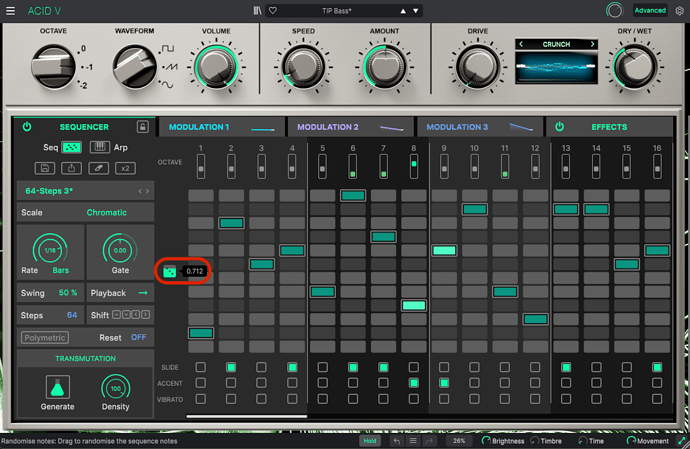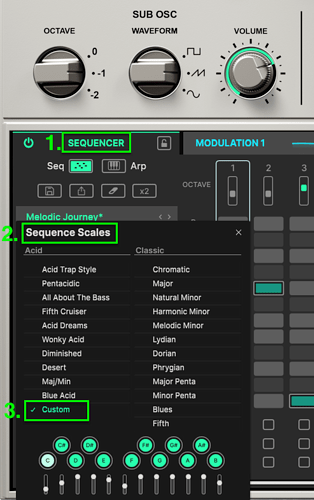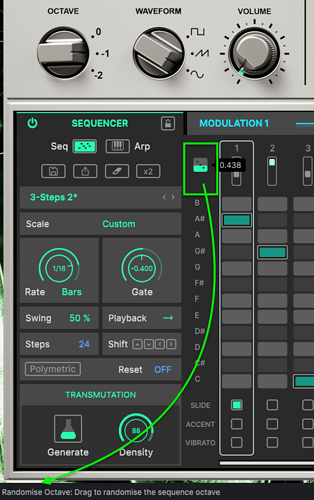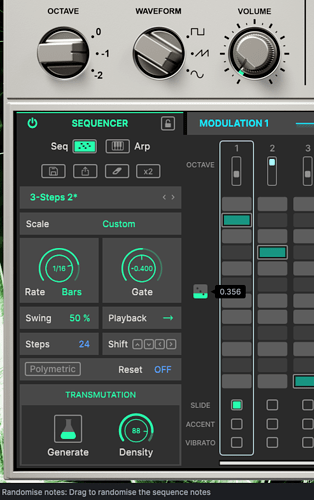If you choose a scale eg. diminished and hit transmutation, you get maybe two or three notes different from the root note.
A typical example with dim scale: I just got 13 root Cs. one Eb and two As.
It may be planned this way or it may be a shortcoming…
Acid in demo mode.
Hi Françoise,
Thank you for your interest on the Acid V!
So, normally, relying on the dedicated “Dice” function (which is a bit hidden as this requires to hover with your mouse sequencer sections to see them displayed) to randomize pattern notes should help. A high value will increase the probability that a different note
than the one set will be played:
Hope this helps!
Kind regards,
Guillaume
1 Like
Thank you Guillaume.
It does help, obviously. I admit I haven’t read the manual thoroughly. 
I thought it was simply a little flaw in a new product or maybe a design choice to make Acid more repetitive. My eldest son (Guillaume!) used to play hours with Rebirth and I thought the acid genre was a bit predictable. But I recently discovered Tin Man and Plastikman.
And some presets by Victor Morello, Florian Marin and others point to richer possibilities than “classic” acid.
1 Like
Hey @francoise 
In the advance panel you just need select the “Custom” option on the Scale section and then you’ll be able to select the notes you want to randomise as well as the level of probability with the sliders.
Don’t forget that you can also use the dise on the piano roll to randomise the octaves and notes by hover on the notes name.
HIH 
1 Like
Thank you Nats!
I’ll be seeing dices everywhere now ! 
You also have dices for Accent, Slide and Vibrato.
I hadn’t tried the Custom scale with Acid but I’m using it in Pigments. Sus scales are often useful since they accomodate many (not all) melodies.
As soon as you change the Generate or Densitiy ratios they get applied to the ongoing sequence. Also when you change scale.
2 Likes
Yep! hopefully all the randomisations will inspire your acid creations 
1 Like



